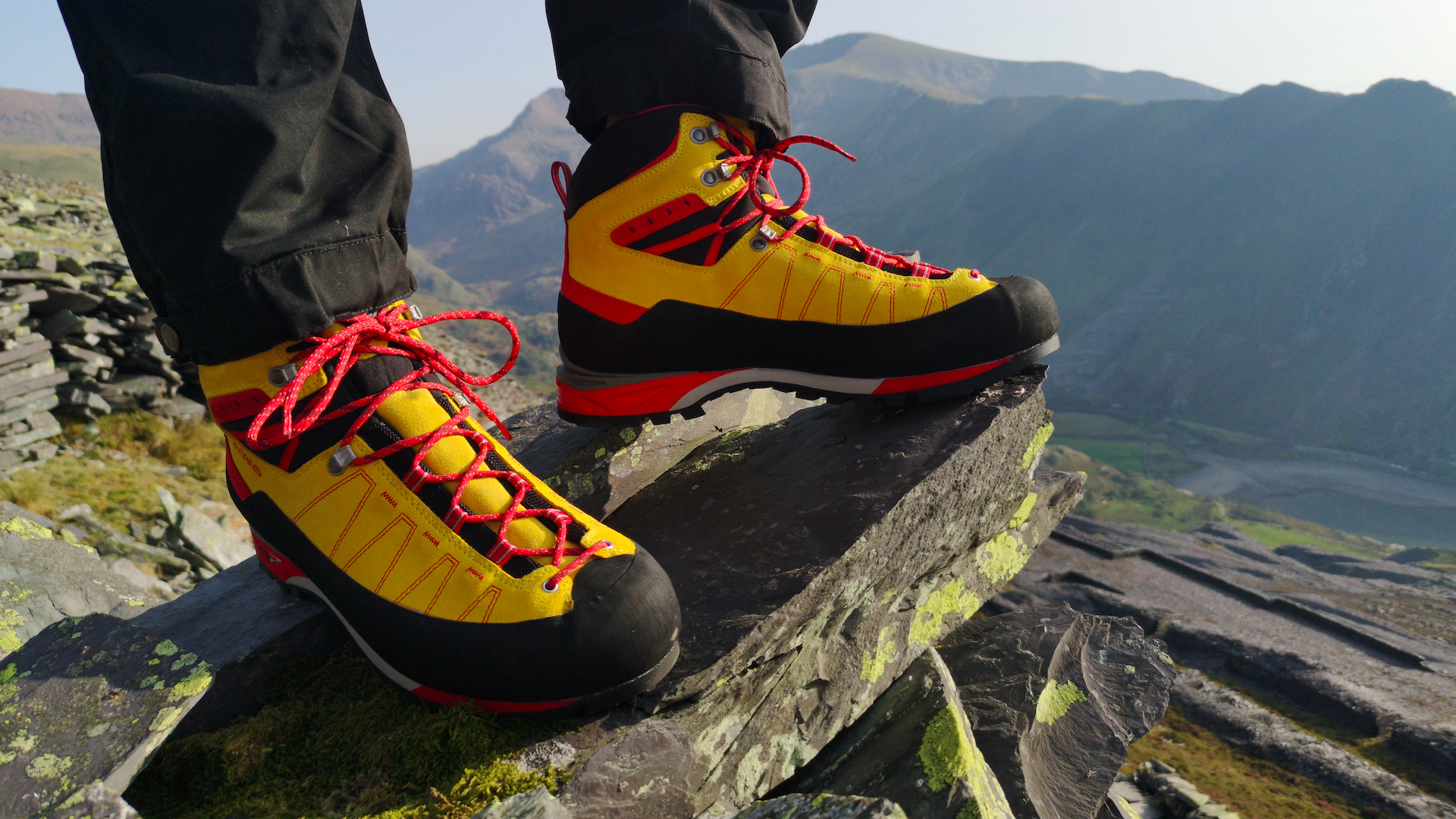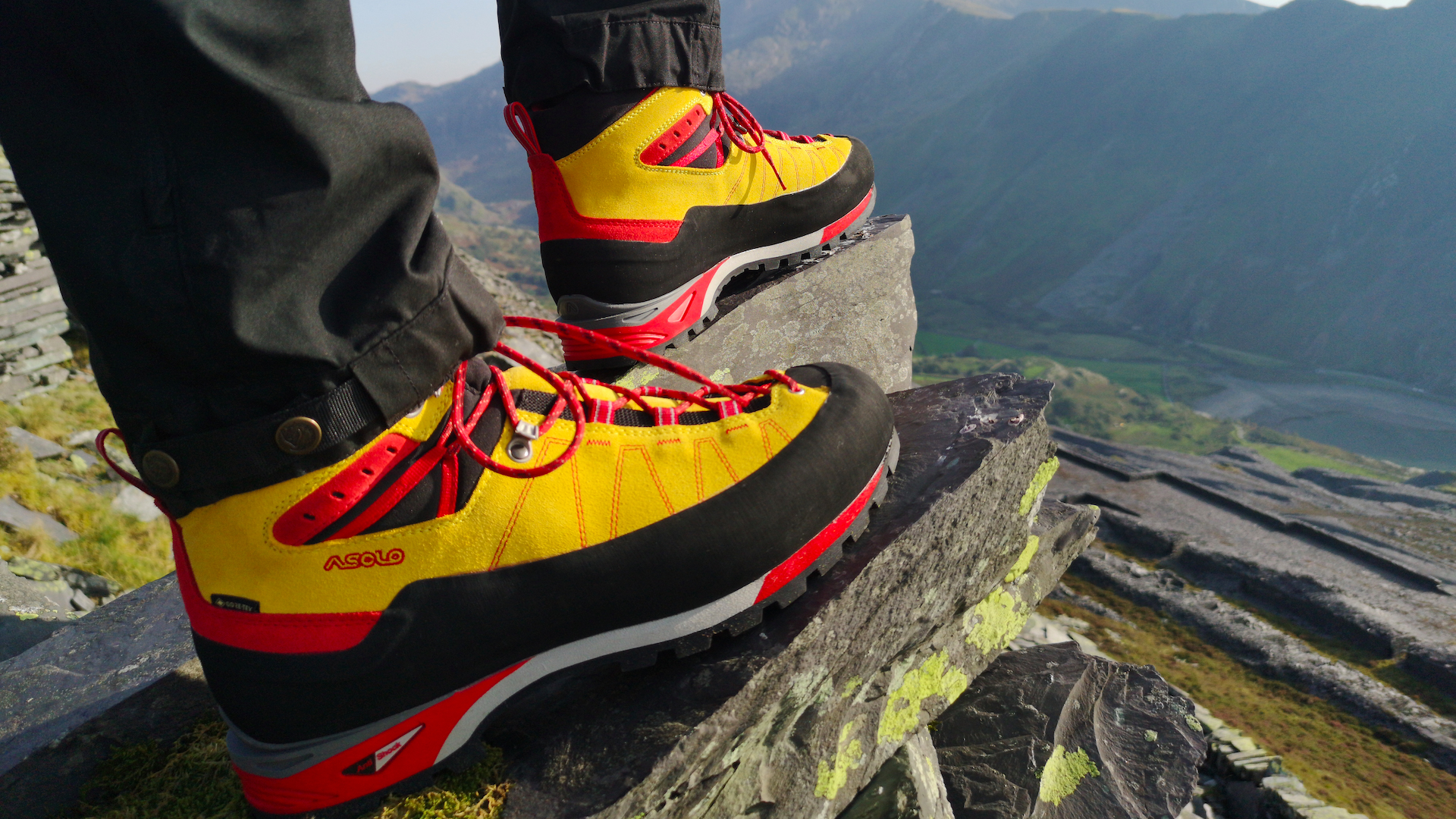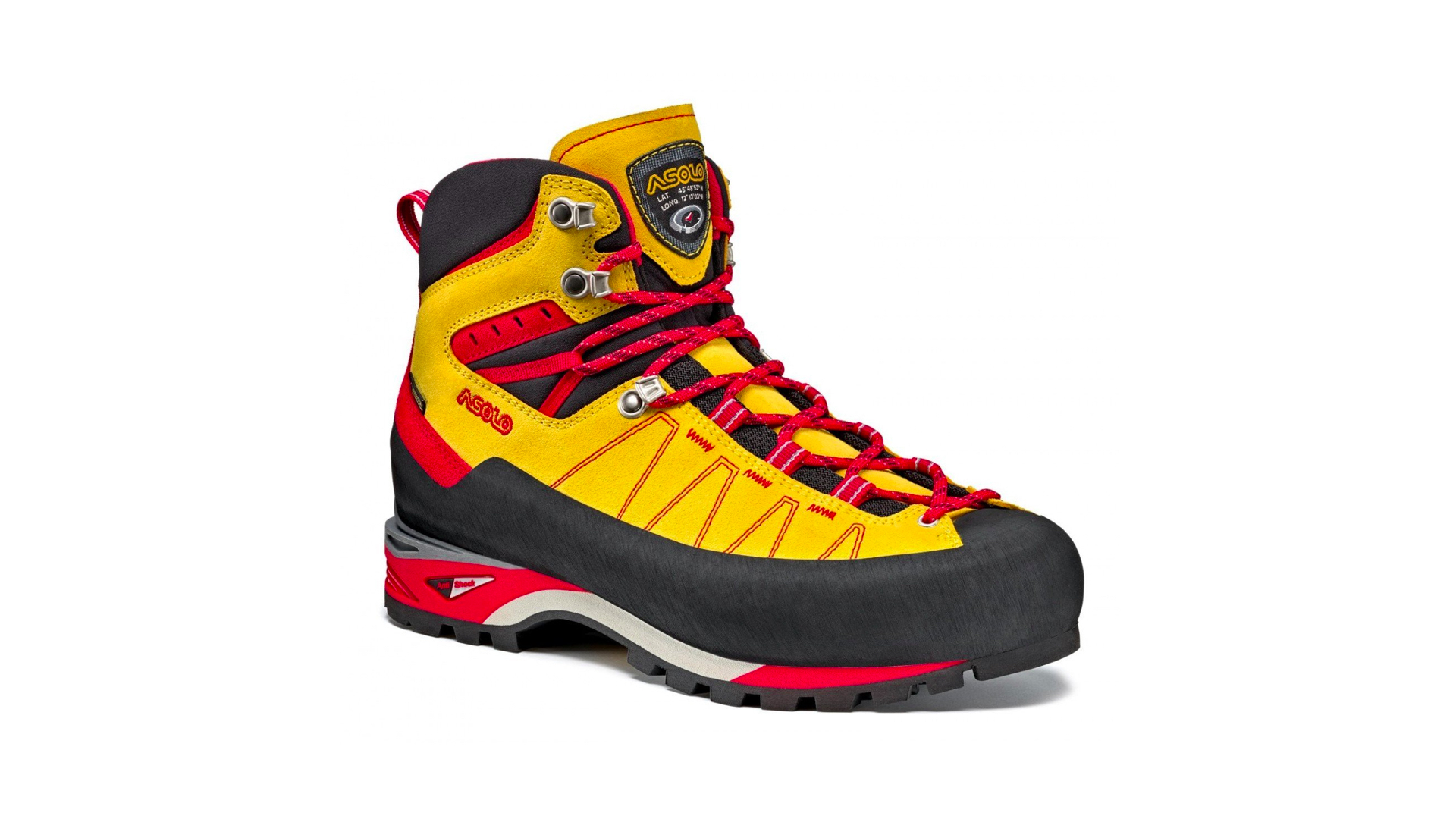Advnture Verdict
If you’re a confident mountain type who loves nothing more than scrambling up gullies or traversing long, narrow ridges, these might just be the perfect boots for you. With a light and agile feel, plus the capability to fit a C2 crampon, they’re well equipped for year-round mountaineering at the low to mid grades.
Pros
- +
Impressively lightweight
- +
Great out-of-the-box comfort for a leather boot
Cons
- -
Lower ankle cuff means it’s not the most protective or supportive boot
- -
Not insulated
You can trust Advnture
Asolo Piz GV: first impressions
The bright, banana yellow uppers of the Asolo Piz GVs are bold and striking, which might make some feel a bit self-conscious. But if you’re the sort of hiker who likes to stand out, the unusual colorway will probably appeal.
And don’t judge them on looks alone. Despite the somewhat brash appearance, this is a sensible boot. The uppers are made from suede leather and Schoeller softshell fabric with a waterproof and breathable Gore-Tex Performance Comfort lining. They have a full wraparound rand with a protective toecap, plus a heel welt to take a semi-automatic C2 crampon (see: types of crampons).
But how did they fare when we tested them in the mountains for our best winter hiking boots buying guide? Read on…
• RRP: £263 (UK) / €287 (EU)
• Materials: Water-resistant suede and Schoeller soft shell, Gore-Tex membrane lining, Vibram Mulaz outsole
• Weight (per boot): 640g / 1lb 6.6oz
• Colors: Mimosa / Fire Red
• Compatibility: Four season, B2
Asolo Piz GV: on the trails

When reviewing boots, outdoor kit reviewers often talk about factors like grip, stability, support and even that nebulous thing called “feel”. Those are all important, but ultimately, much of what makes a good mountain boot comes down to whether it inspires confidence. Basically, the underlying question is this: can you trust your next step?
With the Asolo Piz, the answer is a resounding yes. These boots are neat and nimble, lightweight and precise, with reliable traction underfoot – all qualities that are likely to make you regard the knife-edge ridge snaking out in front of you with a sense of excitement and anticipation rather than fear and apprehension. Case in point: we wore them across Snowdon’s notorious Crib Goch, and fairly skipped across.
Comfort
Their weight-conscious, precision design means that the Asolo Piz have a mid-cut height and therefore offer slightly little less padding around the ankle than you get with most other B2 boots. This obviously saves weight but sacrifices a little cushioning and some insulation in winter too. On the other hand, it gives plenty of ankle mobility, so if you prefer a less restrictive boot, you’ll likely regard it as a benefit. A pronounced rear cutaway also relieves pressure on the Achilles and the impressively low weight alleviates foot fatigue on long days.
The stiffened midsole is there to provide a stable platform underfoot. Unlike most other stiffened mountain boots, however, these have a more structured insole, which means they don’t feel too board-like, and even deliver a bit of welcome arch support. Out of the box, they’re superior in this regard to almost all the other B2 boots we tested.
All the latest inspiration, tips and guides to help you plan your next Advnture!
Fit
These boots have a slim heel and midfoot, with a slightly asymmetric toe-box that isn’t dissimilar to the shape of a trad climber’s rock boot. This, added to their modest vertical toe profile, makes it easy to jam the toe into small pockets, which is very useful when scrambling. It means they aren’t the roomiest though, so you might want to look elsewhere – or at least try them very carefully for size – if you are broader of hoof.

Performance
The Vibram Mulaz outsole delivers contact grip via a front “climbing zone” for precise foot placement on smaller ledges. But it also performs well on mixed terrain, whether you’re moving uphill, downhill or traversing along angled slopes.
Protection
If the Piz have a drawback, it is probably in this category. Their slightly lower cut inevitably gives you a bit less protection and support compared to higher boots. There’s also a little less padding around the ankle than you get with other boots. This obviously saves weight but sacrifices a little cushioning and some insulation in winter too – these aren’t the warmest, though with your thickest mountaineering socks they’re still a viable option for frozen terrain.
Durability
That full wraparound rand ensures good toughness on mixed mountain terrain, especially around the toecap. Apart from a small softshell ankle panel and cuff, the uppers are all made from suede leather too, which also adds to overall durability. Of course, they soon lose their bright yellow hue, but the result is purely cosmetic, and some might prefer the look once they’ve been toned down anyway.
The Vibram sole underfoot wears well, being made from a fairly hard compound that should stand up to hard use.
An outdoors writer and editor, Matt Jones has been testing kit in the field for nearly a decade. Having worked for both the Ramblers and the Scouts, he knows one or two things about walking and camping, and loves all things adventure, particularly long-distance backpacking, wild camping and climbing mountains – especially in Wales. He’s based in Snowdonia and last year thru-hiked the Cambrian Way, which runs for 298 miles from Cardiff to Conwy, with a total ascent of 73,700 feet – that’s nearly 2½ times the height of Everest. Follow Matt on Instagram and Twitter.


